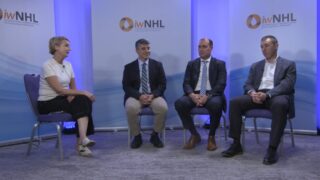Our goal with this research study was to investigate the results and outcomes of patients who died early after being diagnosed with diffuse large B-cell lymphoma. We investigated over 500 patients with diffuse large B-cell lymphoma and identified those who had early death who died within 90 days of diagnosis. And we used their characteristics to try to identify via machine learning called XGBoost, a new methodology, to identify the factors that could be added to other known risk factors in the R-IPI score to be able to discriminate who presents early death after diagnosis of diffuse large B, whether they receive treatment or not...
Our goal with this research study was to investigate the results and outcomes of patients who died early after being diagnosed with diffuse large B-cell lymphoma. We investigated over 500 patients with diffuse large B-cell lymphoma and identified those who had early death who died within 90 days of diagnosis. And we used their characteristics to try to identify via machine learning called XGBoost, a new methodology, to identify the factors that could be added to other known risk factors in the R-IPI score to be able to discriminate who presents early death after diagnosis of diffuse large B, whether they receive treatment or not. The idea was to be able to predict better who is at high risk of not receiving any benefit from the treatments that we offer or who cannot really receive the treatments that we normally offer like R-CHOP. The factors that we identify in addition to the R-IPI included having a low body mass index, so being underweight, having a poor nutritional status measured by a low albumin, having a low hemoglobin, having a comorbidity score of more than three, and having a poor renal function as well as having a decreased lymphocyte count. And when we use all those numbers we can identify additional groups of patients that can discriminate the survival of diffuse large B-cell lymphoma patients into more groups than the normal R-IPI and we identify patients with good, we have very good, good, intermediate, poor and very poor and our main focus was to try to identify those very poor outcome patients, which represent about 10% of patients, but they’re a group of people who have a one year overall survival of 25% or less, and a median survival that is about three months. And the main idea is to be able to identify this new group of patients with high-risk disease for whom our current treatments are not serving them, to be able to eventually study our novel therapies, potentially anthracycline-free therapies, to be able to serve them better.
This transcript is AI-generated. While we strive for accuracy, please verify this copy with the video.














